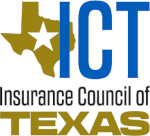Five Years Since Harvey. Seventeen Years Since Katrina. What Did We Learn?

Five Years Since Harvey. Seventeen Years Since Katrina. What Did We Learn?
Tips on how to prepare for the next major hurricane
Austin, TX – On Aug. 29, 2005, Hurricane Katrina roared ashore as a devastating and destructive Category 5 hurricane, with wind speeds topping out at 174 mph. The storm caused over 1,800 fatalities and remains the single biggest loss event in the history of the global insurance industry.
On Aug. 25, 2017, Hurricane Harvey made landfall near Port Aransas as a dangerous Category 4 hurricane with wind speeds up to 134 mph. The storm claimed 68 lives and went on to produce an unbelievable 27 trillion gallons of rain. In Texas alone, insurers paid out an estimated $20 billion in losses, making Harvey the single biggest loss event in the state’s history.
These storms displaced hundreds of thousands of people as the floodwaters rose. Homes were destroyed, cars washed away, businesses impacted, and lives changed. As the anniversaries of Katrina and Harvey approach, we can reflect on the lessons learned and be better prepared for the next major catastrophe that threatens the coast.
Lesson 1: Consider Flood Insurance
In the wake of Harvey, floodwaters damaged more than 200,000 homes and apartment buildings in Harris County, and 75 percent of these affected residences were not in a flood plain.
Without flood insurance, most residents must pay out of pocket, depend on the Federal Emergency Management Agency (FEMA) grants or assistance, or take out loans to repair and replace damaged items. With flood insurance, you can recover faster and have more resources available for the recovery process.
Only about 14 percent of Texas homeowners have flood insurance through the NFIP (National Flood Insurance Program)
A typical homeowners or renters insurance policy does not usually cover flood damage.
Coverage limits: $250,000 for the building and $100,000 for the building contents.
Buy now! Unless obtained upon the purchase of a new home, NFIP flood insurance policies typically have a 30-day waiting period from date of purchase until your flood insurance policy goes into effect.
25 percent of flood claims come from outside high-risk flood zones.
Any insurance agent can sell flood insurance. Most flood insurance policies (about 95 percent) are provided by the National Flood Insurance Program (NFIP) which falls under FEMA, but the private market provides flood coverage as well.
As of 2022, the average annual NFIP flood insurance rate is $985, and the average annual rate in Texas is only $656 – the 4th cheapest premiums in the country.
Lesson 2: Be Prepared
Tropical storms and hurricanes can and do develop quickly, often with only a few days’ notice. After they form, their forecasted tracks can change quickly. Texans living near or along the coast need to stay prepared for severe weather risks, especially during hurricane season.
Check your insurance coverage. Make sure you have adequate coverage – the cost to rebuild a home has increased dramatically in the last few years.
Know if you have a named storm deductible and how much it is, or an exclusion for wind coverage.
Many property owners in coastal counties need a separate windstorm policy.
While the majority of policies are written through the private market, another option is to purchase a policy through the state’s “insurer of last resort,” the Texas Windstorm Insurance Association (TWIA).
Inventory your personal property with a video catalog of your home. It will help the claims process if disaster strikes.
Build an emergency supplies kit. Ready.gov has a good list of what items you should have in your “go bag.”
Make an evacuation plan. Sign up for alerts through your local emergency services district and know what the evacuation routes are.
Lesson 3: After the Storm
In the aftermath of a major storm, Texans should be on the lookout for any bad actors that try to take advantage of those in need. Fraud is often prevalent as people begin the recovery process, so take these steps to protect yourself:
Identify contractors through references. Family, friends, and neighbors can often provide trusted resources for service providers after a loss. Check online reviews.
Questionable sales tactics are a huge red flag. If a contractor is offering a significant discount, requires payment up front, or offers to waive a deductible, seek other options. It is illegal in Texas for a contractor or roofer to waive or rebate an insurance deductible.
Get more than one estimate. Compare the itemized repairs and never sign a contract with blanks on it.
There will be another major hurricane that hits the Texas coast – it is not a matter of if, but when. Securing flood insurance on your property, staying prepared with evacuation plans and an emergency supplies kit, and ensuring you have adequate insurance coverage in place are steps every Texan can take to be protected when the next storm hits.
###
About the Insurance Council of Texas
The Insurance Council of Texas is a nonprofit trade association that promotes the property and casualty insurance industry by providing relevant information and resources to its members, the public, regulators, and the media. Learn more at www.insurancecouncil.org.
Interview Requests
ICT staff is available for phone and online interviews. Contact Rich Johnson, director of communications and public affairs at rjohnson@insurancecouncil.org.
